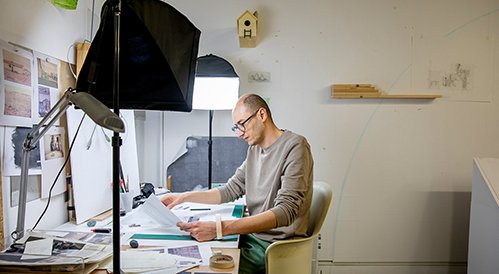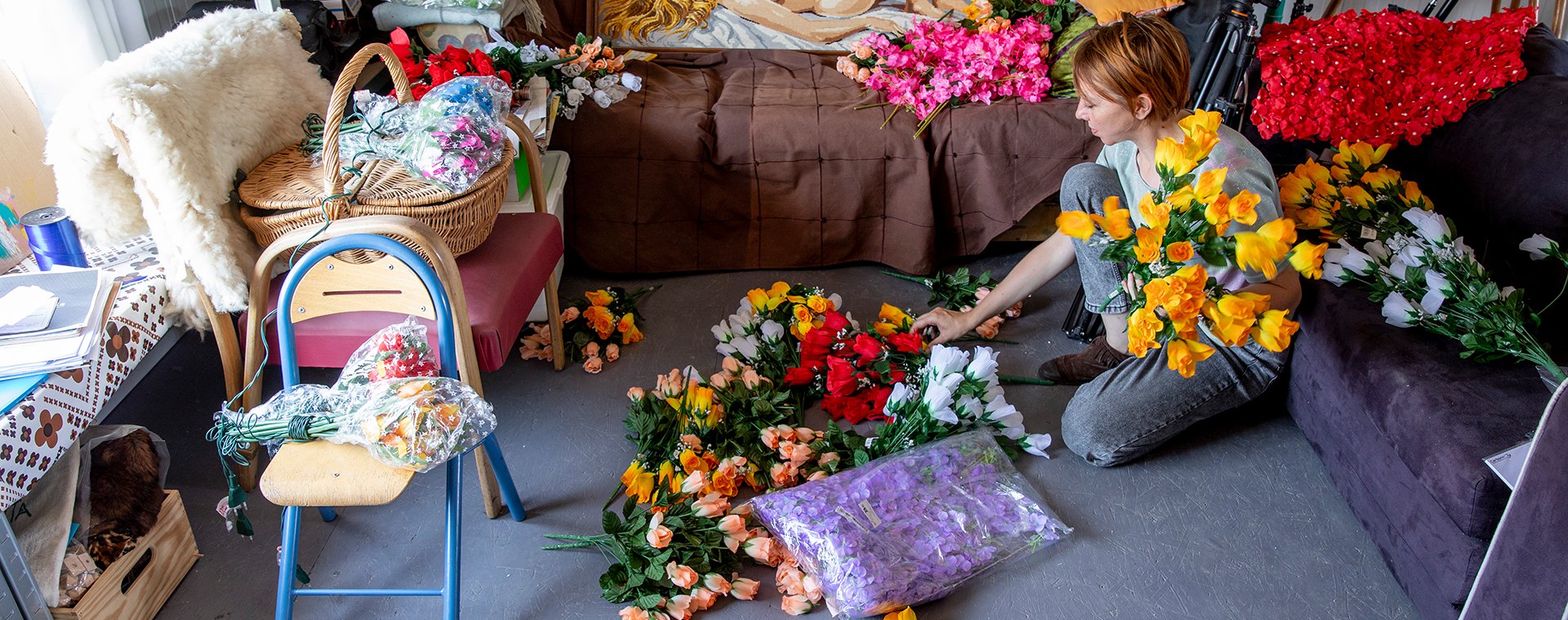
Bertille Bak, between sociological documentary and poetic fiction
For the Marcel Duchamp Prize, Bertille Bak, who works with a long-term approach, often immersed in her subject, has had to speed up her process. Yet, seated in the small, flowery garden outside her studio, she calmly sips her tea as a few hens roam around, having left the adjoining vegetable garden. The tranquillity is disturbed only by the regular ringing of the bell on the automatic railway gate that protects residents from passing trains. We are in Épinay-sur-Orge, to the south of Paris, where the 40-year old videographer and visual artist has lived for nearly ten years, far from the hustle and bustle of Paris – where she rarely ventures. This white, prefab rectangular building adjacent to the railway houses her living space on one side and her studio on the other. The ground floor looks like a tool shop and in the office upstairs, she stores an array of archive boxes, full of a jumble of garlands, wool and all kinds of salvaged materials. A pile of artificial flowers sits on the floor in the corner, hinting at her current work. “I came up with the idea I’m working on for the Prize relatively late, but it incorporates the aspects I’ve developed in my practice. Each of my projects is rooted in popular culture, here it’s the traditional holidays throughout the year,” she explains. Following her works exploring the Gypsy community in Ivry-sur-Seine, Polish immigrants in New York, and the residents of a Bangkok building marked for demolition, the jumping off point for her current work is seasonal holidays, French traditions, and the plants that symbolise them (Valentine’s Day roses, Christmas trees).
In collaboration with Paris+ par Art Basel
I came up with the idea I’m working on for the Prize relatively late, but it incorporates the aspects I’ve developed in my practice. Each of my projects is rooted in popular culture, here it’s the traditional holidays throughout the year.
Bertille Bak
At the heart of her exhibition at Centre Pompidou is a video installation entitled Nature Morte (partie 1:l’hiver) (Still Life (part 1:Winter)) to recount the ecological absurdity of the flower industry, and most importantly, the North/South inequality underlying this business – plants sold on a massive scale in Northern cities often come from Southern rural areas. She says: “I’m interested in the flow of flowers, from cutting to market. I worked with a fir tree farmer in the North of France, I travelled to the rose farms of Bogota and a flower farm near Medellin. Columbia is the world’s second-largest exporter of cut flowers, after the Netherlands, where I also travelled to experience the auction markets. I spend a lot of time with small communities; it’s a real fieldwork approach. Together, we attempt to build a new narrative, to find a new language, while trying to be fair,” explains the artist.
The ideas of fairness and justice have inspired Bertille Bak since her earliest works. She upholds her family heritage — she is the granddaughter of Polish miners in northern France. In her early projects, this Arras native explored mining communities: “When I was a student at Beaux-Arts, I made films with my family and neighbours. I filmed my grandparents, who had to move since their mining estate was being renovated – for them it was a kind of uprooting. I also focused on silicosis, a disease specific to miners, in Tu redeviendras poussière (To Dust You Shall Return) in 2017. In mining communities, there was a real sense of solidarity: everyone had a role to play. That's what led me to explore other groups united by a territory, traditions and a common folklore,” says the artist. The graduate of Beaux-Arts de Paris and the Fresnoy has enjoyed great success in recent years: in 2022 she presented a solo exhibition at the Merz Foundation in Turin (she won the Mario Merz prize in 2019). After a residency at the Pinault Collection in Lens from 2019 to 2020, her work is currently being shown at the Louvre-Lens until September. She is inspired by the museum, which is located on a former mine yard (and her solo show is entitled “Power Coron”). In 2022, her project “Mineur Mineur” (Minor Miner), which was hampered in part by the successive lockdowns, explored child labour: “My grandfather worked in the mines from the time he was 13. I wanted to learn more about children’s circumstances in the world today,” she says.
My work is highly collaborative, like little fables made from scratch, little stories. There’s a great deal of parody, in an attempt to express a certain truth in a different way.
Bertille Bak
While Bertille Bak’s works are informed by careful, long-term observations, they transcend the strict framework of recording real life through humorous tangents, bordering on the absurd and burlesque – between sociological documentary and poetic fiction. She says: “My work is highly collaborative, like little fables made from scratch, little stories. There’s a great deal of parody, in an attempt to express a certain truth in a different way.”
In each of her works, great care is given to form, a desire to draw the viewer’s attention to better question the world: “If I stretch reality by making up little stories, I do so to better depict reality. By venturing off the beaten path in a naive or playful way, I try to awaken the viewer to this reality." As the daughter of educators for deaf and mute children, Bertille Bak does not refute the term “social art”. Memory is also a central theme of her work. This is not surprising, given that at Beaux-Arts de Paris, she was a student in the studio of an artist by the name of Christian Boltanski. She says that she still feels “great affection” for him (the artist died in 2021, editor’s note). “At school, he used to come once a week, and we would talk about everything. He was an incredible person, so generous and natural,” she says fondly. When asked what parallels can be made between their respective practices, she responds, “Perhaps the autobiographical aspect, and the idea of focusing on people, passing on the stories of battered lives.” ◼
Related articles
In the calendar
Portrait de Bertille Bak dans son atelier, juin 2023
Photo Julie Ansiau
© Centre Pompidou
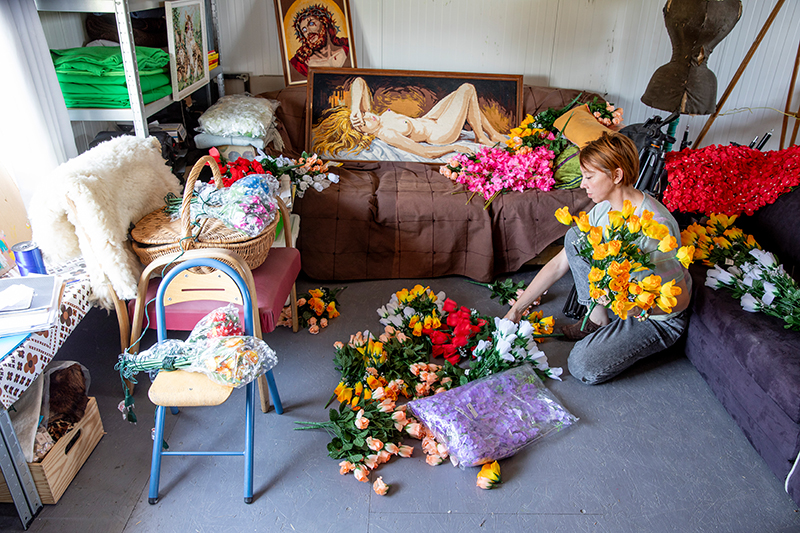
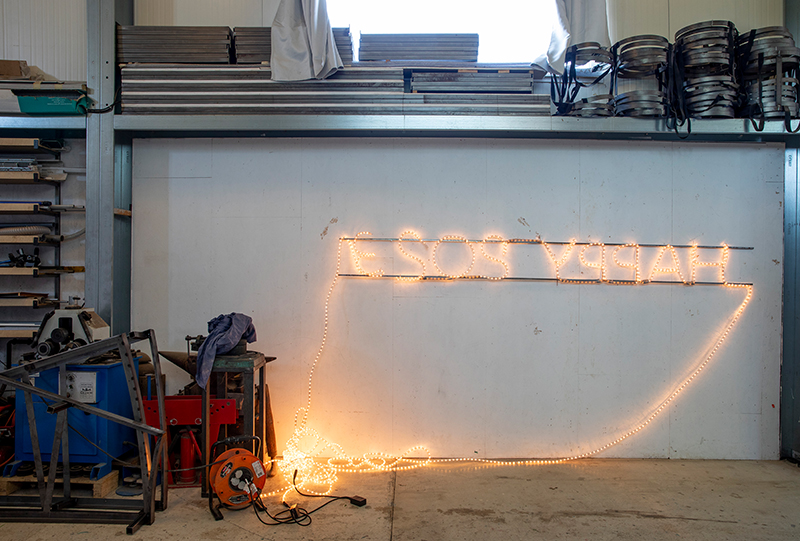
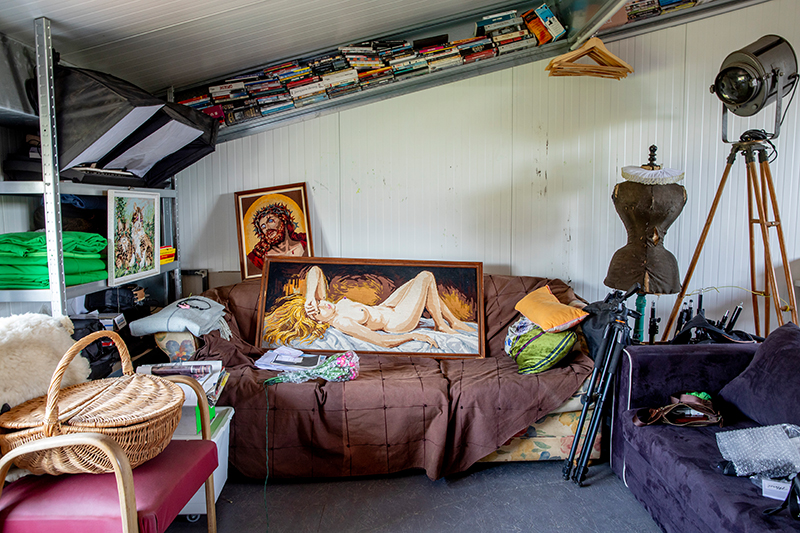
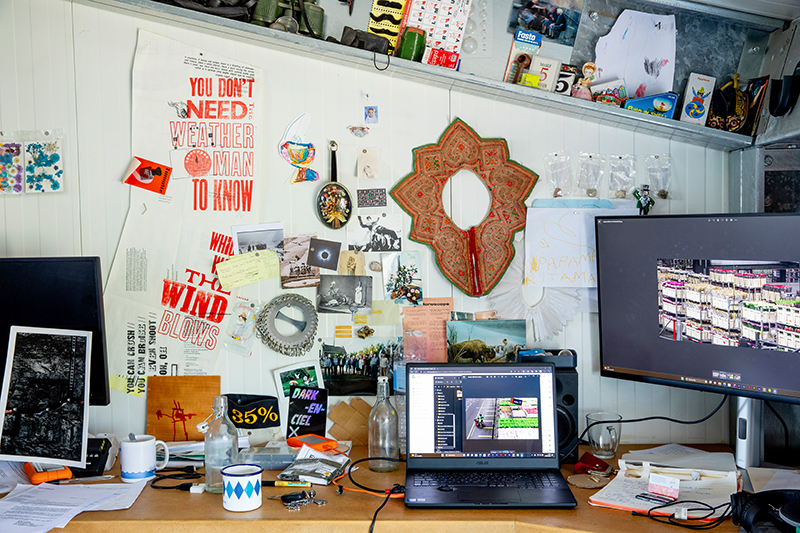
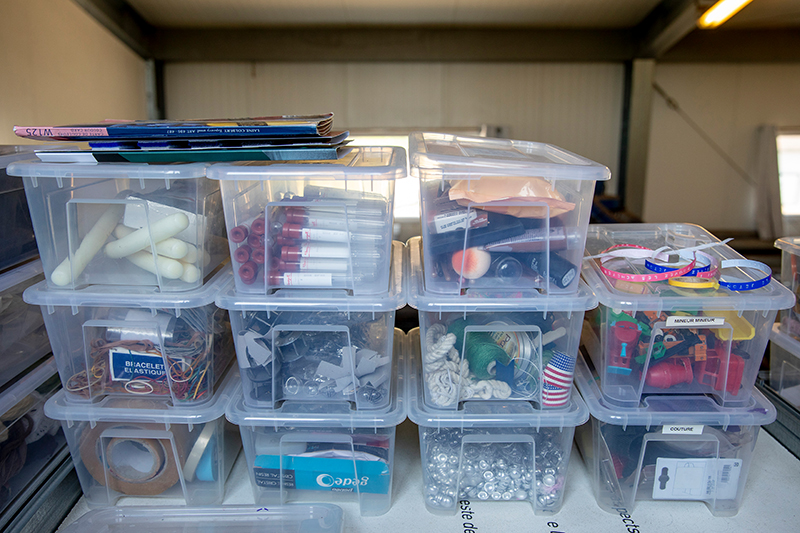
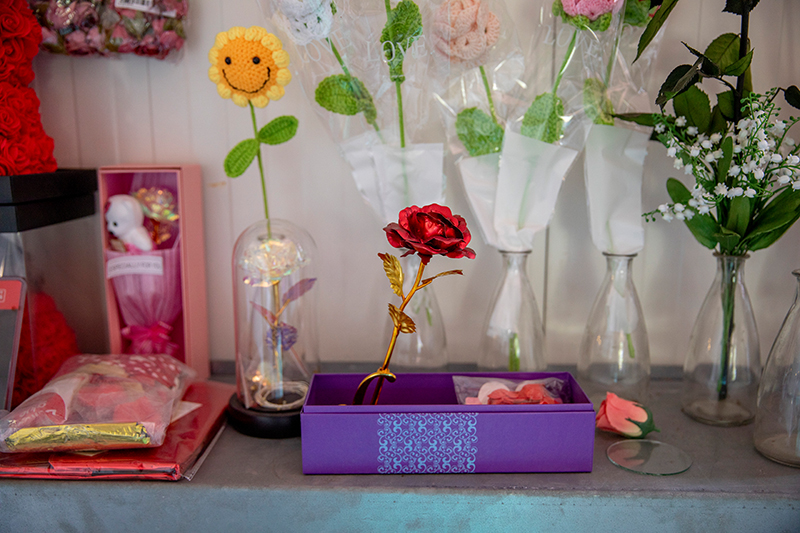
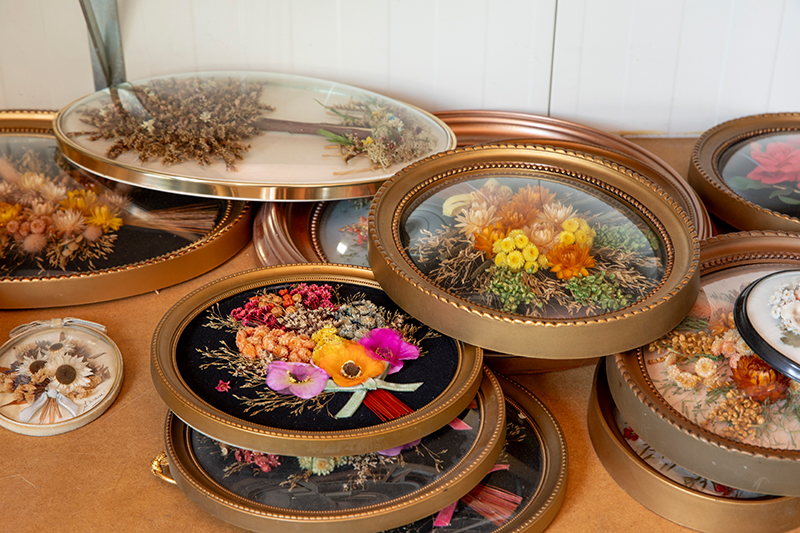
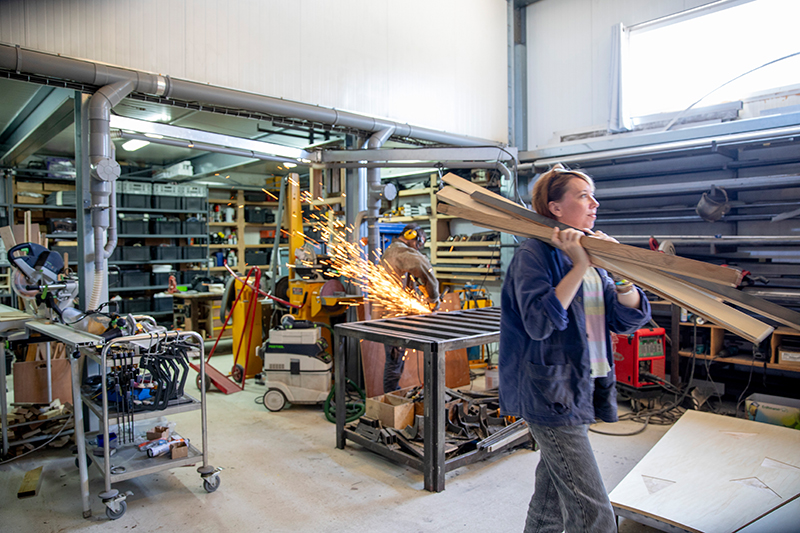
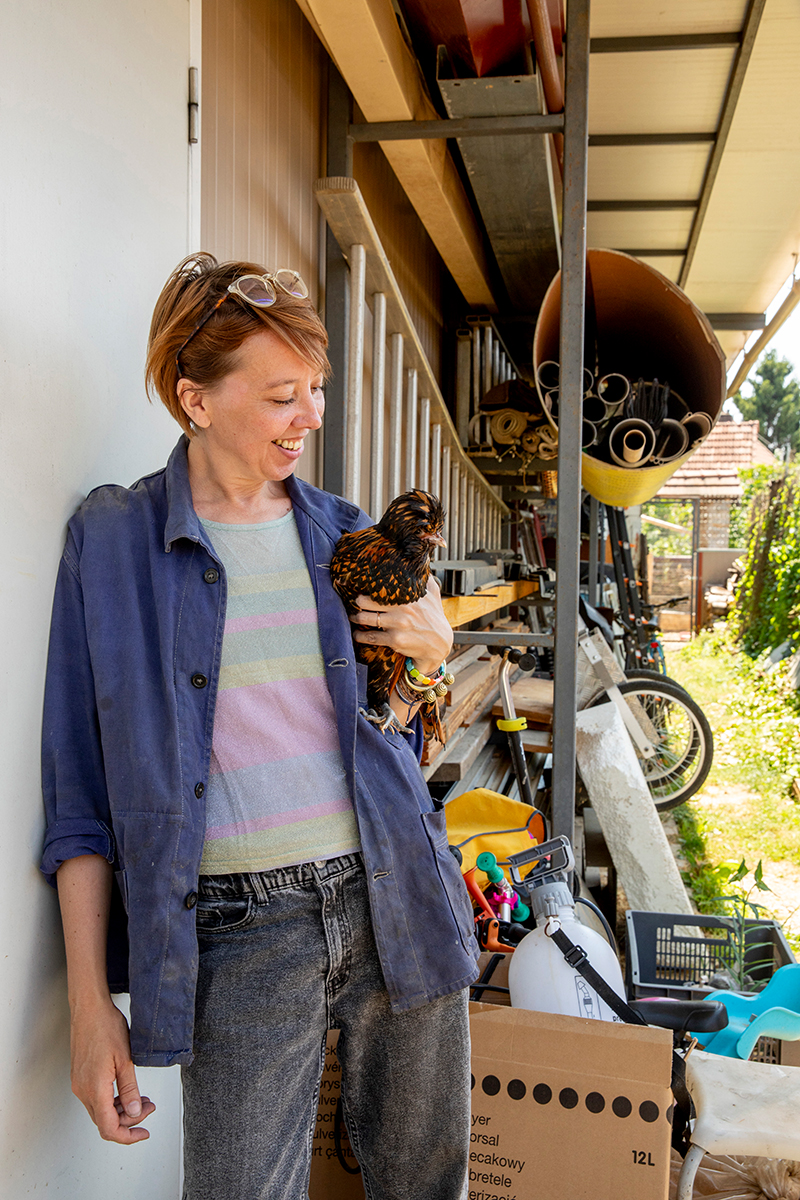
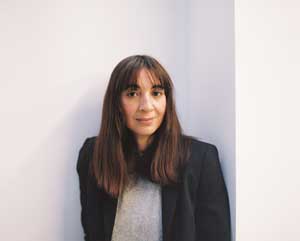
![[Translate to English:] [Translate to English:]](/fileadmin/user_upload/tarik-vignette.jpg)
